Burp Spider
Spider
Burp Spider is a feature to map Web applications. This tool builds a tree by following the links in a page source.
From the subtab "site map" of "target", select "spider this host" from the context menu (right click on an item):
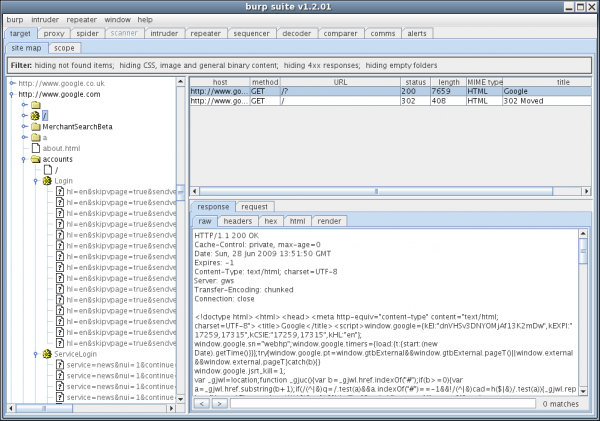
"Control" Tab
This tab lets you control the "spider".
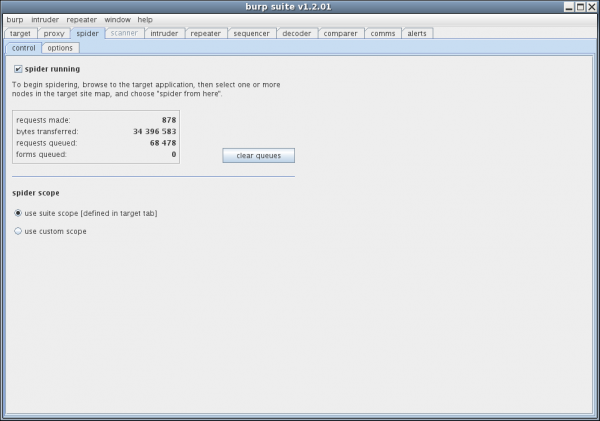
- spider running: This checkbox allows to start or stop the "spider". Statistics show the progress of the work in progress.
- spider scope: this option allows you to define the scope of the "spider".
"Options" Tab
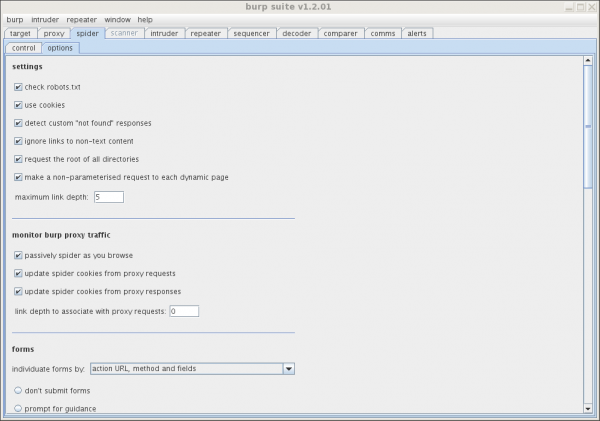
The options are:
settings
- check robots.txt : include a robots.txt file to explore the links it contains.
- use cookies : use cookies collected in each query
- detect custom "not found" responses : allows the recognition of custom 404 pages.
- ignore links to non-text content : increases the speed of the "spider" by analyzing MIME types based on tags (for example <img>).
- request the root of all directories : request all elements of the "scope" recursively.
- make a non-parameterised request to each dynamic page : test the behavior of dynamic pages settings by sending no parameters.
- maximum link depth : sets the search depth (the number of "jumps" followed by links).
|
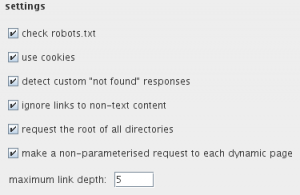
|
monitor burp proxy traffic
- passively spider as you browseactivates "spidering" quietly (during navigation).
- update spider cookies from proxy requests : automatically updates the cookie requests (client).
- update spider cookies from proxy responses : automatically updates the cookie response (server).
- link depth to associate with proxy requests : defines the level of depth to "spider" (number of links to follow).
|
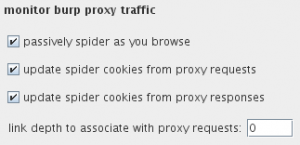
|
- individuate forms : allows the identification of duplicate forms based on their properties (method, action, name, etc.)
- Options:
- don't submit forms : do not submit forms.
- prompt for guidance : with each form, the tool will ask whether the form should be submitted or not.
- automatically submit using the following rules to assign parameter values : automatic submission of forms with default values in the table (changeable values).
- set unmatched fields to : can set the unmatched form elements with an email address (for example)
- iterate all values of submit fields : function used when a form contains multiple submit buttons. Tells the "spider" How many buttons should be tested.
|

|
application login
|
Tells the "spider" how to behave facing a form of authentication:
- don't submit login forms : do not sumbit a form
- prompt for guidance : how to behave for each form encountered
- handle as ordinary forms : using rules specified above (see "forms")
- automatically submit these credentials : automatic submission of forms with the username / password provided
|
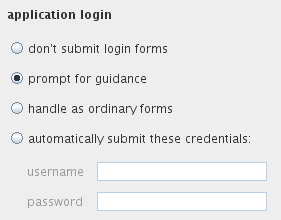
|
spider engine
- thread count : defines the number of threads (number of techniques performed in parallel)
- retries on network failure : number of of tests in case of failure to obtain an item
- pause before retry (millis) : time (in milliseconds) between two tests
|

|
| This section allows you to change the headers of requests to be sent to the target server.
|
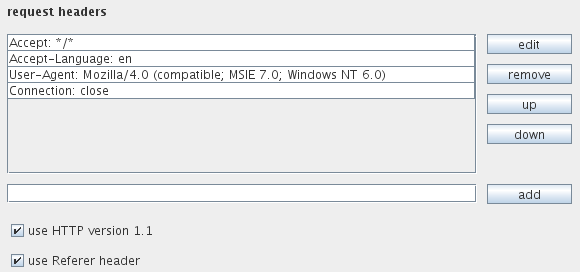
|
Results of the "spider"
All results are sent to the Target tab > Site map








